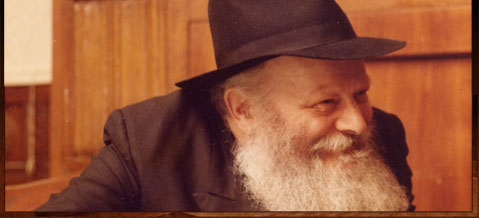The End of One Chapter and the Beginning of Chapter 41
23 December 2020
When I graduated high school, the members of the Jewish community in Indianapolis, my hometown, offered me a free trip to Israel. They thought that a kid like me – who received only a minimal Jewish education and whose parents were minimally observant – needed a boost to stay Jewish. And it so happened that I came to Israel, along with another two hundred kids like me, right after the end of the Six Day War of 1967. We spent two months touring, and wherever we went, we saw happy people. This made an impression on me because, back home, I rarely saw people who looked so happy.
Why were these Israelis so happy? They told us that for six months they had lived in fear of their Arab neighbors who loudly declared that they planned to push every Jew into the sea. And then, in six short days, Israel overcame all of them and recaptured vast amounts of territory, all with minimal casualties.
As a result of this experience, I decided to remain in Israel and study at Hebrew University. During this time, I was also very strongly influenced by a foray into yoga as a religious practice. I liked the idea that one should lead a simple life, be a vegetarian, and not harm other living beings. This was an idea that ran counter to the American capitalist ideal – which seemed selfish in comparison – that one should make a lot of money and buy a lot of beautiful things.
I began to practice yoga meditation – to think about the soul, about the Creator, and about helping others. After a few months, I began feeling a new sensation, which I came to identify as happiness. I was happy because every day I was doing good things. Every day, I didn’t feel the lacks and frustrations that come from craving possessions like money and fancy cars.
I also spent a lot of time wandering around the Judean desert near Jerusalem, where I would see the beauty of nature that G-d created. So my belief in G-d became very strong. Crediting all this to yoga, I considered going to India for more in-depth study.
My father became alarmed, and when I returned to the US for a short time, he arranged for his business partner – Charles Roth, who was affiliated with Chabad – to speak to me. Charles convinced me that I could find the same benefits in chasidic teachings. Chasidim also practiced meditation and had a strong connection to G-d, he said, recommending that I delve into a book called Tanya, the seminal work of the Alter Rebbe, the founder of the Chabad Movement.
To make a long story short, this led me to the study of other Jewish texts and to visiting Kfar Chabad, the Lubavitch village in Israel. As a result of that experience, I enrolled in the yeshivah on the premises, which welcomed people just like me who had little or no background in Judaism.
Once I started studying in this yeshivah, I noticed that some of the students would sit quietly for five or ten minutes before prayers started, and I realized they were meditating. I approached one of them and he confirmed this, directing me to speak to the yeshivah’s spiritual mentor, Rabbi Shlomo Chaim Kesselman to find out more. This is how I learned the meaning of chasidic meditation and its foundation in the contemplation of Chapter 41 of the Tanya.
I started meditating on this chapter for five to ten minutes every day. And very soon I felt myself coming close to G-d, which is a very special, very wonderful feeling. I was also succeeding in my Talmudic studies with Rabbi Shneur Zalman Gafni and in my chasidic studies with Rabbi Hershel Hecht.
After a few months, it was suggested to me that I reach out to the Rebbe for guidance, so I wrote a letter telling the Rebbe my life story. In due course came a reply – a beautiful letter – in which the Rebbe said that he was gratified that, after my spiritual wanderings, I found the right path at last:
In as much as you are fortunate to arrive at your destination, namely the Torah, the Torah of Truth … you will now enjoy the relief that comes after such a journey, and you will utilize all your capacities in the “four cubits” of Torah and mitzvot. And although the [Talmudic] expression speaks of “four cubits,” these are the “four cubits” that embrace the whole world.
I have already had occasion many times to emphasize that, precisely in our day and age, we can clearly see how a small quantity can produce extraordinary results which are completely out of proportion. We have seen the destructive forces that can be realized from a very small quantity of several pounds of atomic material. If this is so in the negative and destructive aspect, how much more is it in the good and constructive aspect… This is why the “four cubits” of Torah and mitzvot, even of one single individual, can have a tremendous effect on the whole world.
The Rebbe went on to point out that there are those who think it is necessary to bring about change in the world through violent revolutions and loud propaganda, but this is not the way of Torah, which teaches us that great things can be accomplished even by small good deeds. In this context, the Rebbe quoted Maimonides, the great 12th century Jewish philosopher, who said, “A person should always consider himself and all the world equally balanced. Thus, at any time, when a person does a good deed, he tips the scale in favor of himself as well as the whole world.”
His letter inspired me greatly. During my second year in yeshivah, my mother came to visit and gave me some extra money. A short time later, we were escorting Rabbi Kesselman to the airport for a visit to the Rebbe. In the heat of the moment, I decided to send the money along as a contribution toward the Rebbe’s outreach campaigns.
Rabbi Kesselman later told me that, when given the donation, the Rebbe inquired about my progress. And when Rabbi Kesselman responded that I was succeeding in my studies and meditating before prayers, the Rebbe was very happy. He actually stood up and exclaimed, “Ben Zion contemplates Chasidus before praying! It would be great if all of the students did the same!”
Subsequently, I had the occasion to meet with the Rebbe in person and I asked him about my prayer practice. He answered that I should continue meditating on Chapter 41 of the Tanya, as well as occasionally studying the first chapter of the section of the Tanya entitled “The Gate of Oneness and Faith.” This chapter talks about how G-d constantly re-creates the world, and if He would not be re-creating the world every second, then the world would cease to exist.
So now, forty-nine years later, I think about this every day before I pray – that G-d gives everything in the world its existence – all the time, at every moment. Realizing this helps me live a happy life, and when tests and challenges intervene, it helps me remember that G-d is everything.
This is the message that I got from the Rebbe and from chasidic teachings. And I’ve been trying my whole life to give over this message to other people, wherever I go and whomever I meet.
Rabbi Ben Zion Cohen resides in Kfar Chabad, Israel where he teaches at Yeshivat Ohr Temimim. He was interviewed in October of 2018.
When I graduated high school, the members of the Jewish community in Indianapolis, my hometown, offered me a free trip to Israel. They thought that a kid like me – who received only a minimal Jewish education and whose parents were minimally observant – needed a boost to stay Jewish. And it so happened that I came to Israel, along with another two hundred kids like me, right after the end of the Six Day War of 1967. We spent two months touring, and wherever we went, we saw happy people. This made an impression on me because, back home, I rarely saw people who looked so happy.
Why were these Israelis so happy? They told us that for six months they had lived in fear of their Arab neighbors who loudly declared that they planned to push every Jew into the sea. And then, in six short days, Israel overcame all of them and recaptured vast amounts of territory, all with minimal casualties.
As a result of this experience, I decided to remain in Israel and study at Hebrew University. During this time, I was also very strongly influenced by a foray into yoga as a religious practice. I liked the idea that one should lead a simple life, be a vegetarian, and not harm other living beings. This was an idea that ran counter to the American capitalist ideal – which seemed selfish in comparison – that one should make a lot of money and buy a lot of beautiful things.
I began to practice yoga meditation – to think about the soul, about the Creator, and about helping others. After a few months, I began feeling a new sensation, which I came to identify as happiness. I was happy because every day I was doing good things. Every day, I didn’t feel the lacks and frustrations that come from craving possessions like money and fancy cars.
I also spent a lot of time wandering around the Judean desert near Jerusalem, where I would see the beauty of nature that G-d created. So my belief in G-d became very strong. Crediting all this to yoga, I considered going to India for more in-depth study.
My father became alarmed, and when I returned to the US for a short time, he arranged for his business partner – Charles Roth, who was affiliated with Chabad – to speak to me. Charles convinced me that I could find the same benefits in chasidic teachings. Chasidim also practiced meditation and had a strong connection to G-d, he said, recommending that I delve into a book called Tanya, the seminal work of the Alter Rebbe, the founder of the Chabad Movement.
To make a long story short, this led me to the study of other Jewish texts and to visiting Kfar Chabad, the Lubavitch village in Israel. As a result of that experience, I enrolled in the yeshivah on the premises, which welcomed people just like me who had little or no background in Judaism.
Once I started studying in this yeshivah, I noticed that some of the students would sit quietly for five or ten minutes before prayers started, and I realized they were meditating. I approached one of them and he confirmed this, directing me to speak to the yeshivah’s spiritual mentor, Rabbi Shlomo Chaim Kesselman to find out more. This is how I learned the meaning of chasidic meditation and its foundation in the contemplation of Chapter 41 of the Tanya.
I started meditating on this chapter for five to ten minutes every day. And very soon I felt myself coming close to G-d, which is a very special, very wonderful feeling. I was also succeeding in my Talmudic studies with Rabbi Shneur Zalman Gafni and in my chasidic studies with Rabbi Hershel Hecht.
After a few months, it was suggested to me that I reach out to the Rebbe for guidance, so I wrote a letter telling the Rebbe my life story. In due course came a reply – a beautiful letter – in which the Rebbe said that he was gratified that, after my spiritual wanderings, I found the right path at last:
In as much as you are fortunate to arrive at your destination, namely the Torah, the Torah of Truth … you will now enjoy the relief that comes after such a journey, and you will utilize all your capacities in the “four cubits” of Torah and mitzvot. And although the [Talmudic] expression speaks of “four cubits,” these are the “four cubits” that embrace the whole world.
I have already had occasion many times to emphasize that, precisely in our day and age, we can clearly see how a small quantity can produce extraordinary results which are completely out of proportion. We have seen the destructive forces that can be realized from a very small quantity of several pounds of atomic material. If this is so in the negative and destructive aspect, how much more is it in the good and constructive aspect… This is why the “four cubits” of Torah and mitzvot, even of one single individual, can have a tremendous effect on the whole world.
The Rebbe went on to point out that there are those who think it is necessary to bring about change in the world through violent revolutions and loud propaganda, but this is not the way of Torah, which teaches us that great things can be accomplished even by small good deeds. In this context, the Rebbe quoted Maimonides, the great 12th century Jewish philosopher, who said, “A person should always consider himself and all the world equally balanced. Thus, at any time, when a person does a good deed, he tips the scale in favor of himself as well as the whole world.”
His letter inspired me greatly. During my second year in yeshivah, my mother came to visit and gave me some extra money. A short time later, we were escorting Rabbi Kesselman to the airport for a visit to the Rebbe. In the heat of the moment, I decided to send the money along as a contribution toward the Rebbe’s outreach campaigns.
Rabbi Kesselman later told me that, when given the donation, the Rebbe inquired about my progress. And when Rabbi Kesselman responded that I was succeeding in my studies and meditating before prayers, the Rebbe was very happy. He actually stood up and exclaimed, “Ben Zion contemplates Chasidus before praying! It would be great if all of the students did the same!”
Subsequently, I had the occasion to meet with the Rebbe in person and I asked him about my prayer practice. He answered that I should continue meditating on Chapter 41 of the Tanya, as well as occasionally studying the first chapter of the section of the Tanya entitled “The Gate of Oneness and Faith.” This chapter talks about how G-d constantly re-creates the world, and if He would not be re-creating the world every second, then the world would cease to exist.
So now, forty-nine years later, I think about this every day before I pray – that G-d gives everything in the world its existence – all the time, at every moment. Realizing this helps me live a happy life, and when tests and challenges intervene, it helps me remember that G-d is everything.
This is the message that I got from the Rebbe and from chasidic teachings. And I’ve been trying my whole life to give over this message to other people, wherever I go and whomever I meet.
Rabbi Ben Zion Cohen resides in Kfar Chabad, Israel where he teaches at Yeshivat Ohr Temimim. He was interviewed in October of 2018.





